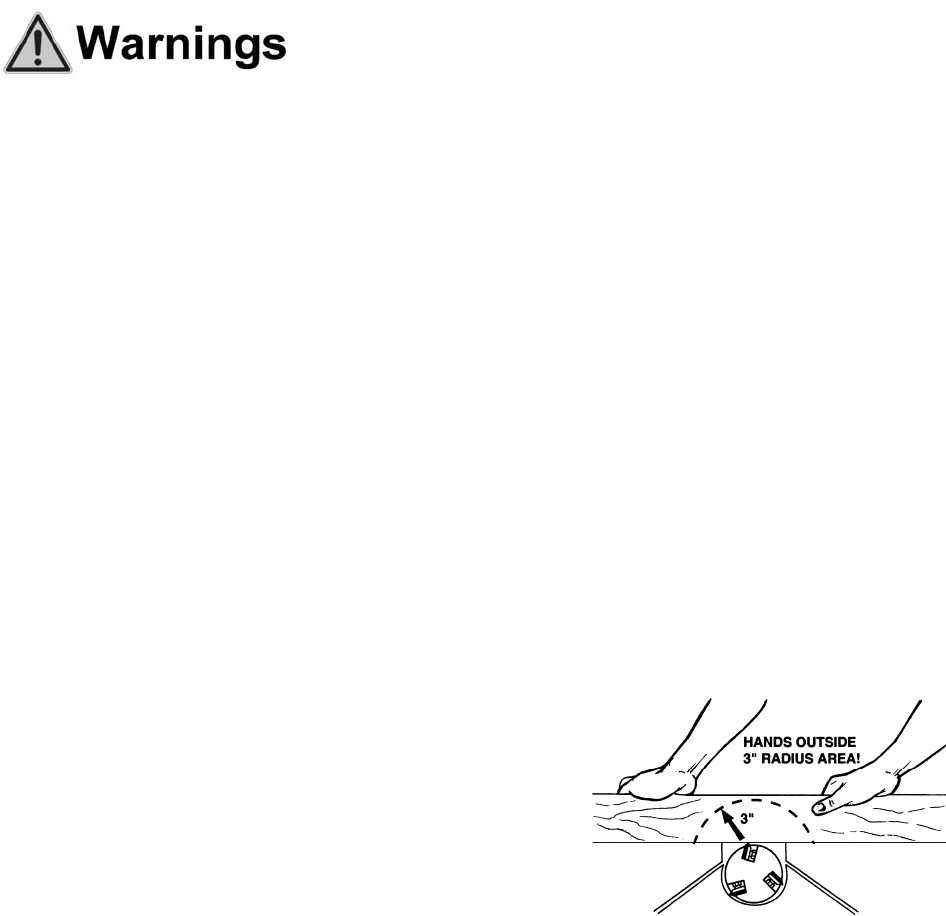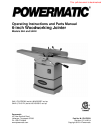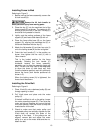
5
20. Keep visitors a safe distance from the work area. Keep children away.
21. Make your workshop child proof with padlocks, master switches or by removing starter keys.
22. Give your work undivided attention. Looking around, carrying on a conversation and “horse-play” are
careless acts that can result in serious injury.
23. Maintain a balanced stance at all times so that you do not fall or lean against the cutterhead or other
moving parts. Do not overreach or use excessive force to perform any machine operation.
24. Use the right tool at the correct speed and feed rate. Do not force a tool or attachment to do a job for
which it was not designed. The right tool will do the job better and safer.
25. Use recommended accessories; improper accessories may be hazardous.
26. Maintain tools with care. Keep knives sharp and clean for the best and safest performance. Follow
instructions for lubricating and changing accessories.
27. Turn off the machine before cleaning. Use a brush or compressed air to remove chips or debris — do
not use your hands.
28. Do not stand on the machine. Serious injury could occur if the machine tips over.
29. Before turning on machine, remove all extra equipment such as keys, wrenches, scrap, stock, and
cleaning rags away from the machine.
30. Never leave the machine running unattended. Turn the power off and do not leave the machine until
the cutterhead comes to a complete stop.
31. Always use a hold-down or push block when surfacing stock less than 12" inches long, or 3 inches
wide, or 3 inches thick.
32. Do not perform jointing operations on material shorter than
8", narrower than 3/4" or less than 1/4" thick.
33. The hands must never be closer than 3 inches to the
cutterhead (see Figure at right).
34. Never apply pressure to stock directly over the cutterhead.
This may result in the stock tipping into the cutterhead along
with the operator's fingers. Position hands away from
extreme ends of stock, and push through with a smooth,
even motion. Never back workpiece toward the infeed table.
35. Do not make cuts deeper than 1/2" when rabbeting. On other cuts such as edging, surfacing, etc.,
depth of cut should not be over 1/8" to avoid overloading the machine and to minimize chance of
kickback.
36. To avoid kickback, the grain must run in the same direction you are cutting. Before attempting to
joint, or plane, each work piece must be carefully examined for stock condition and grain orientation.
37. When working with a swirl grain wood or burls, making it necessary to plane against the grain, use a
lesser depth of cut and a slow rate of feed.
38. Move the hands in an alternate motion from front to back as the work continues through the cut.
Never pass the hands directly over the cutter knives. As one hand approaches the knives remove it
from the stock in an arc motion and place it back on the stock in a position beyond the cutter knives.
39. At all times hold the stock firmly.


















